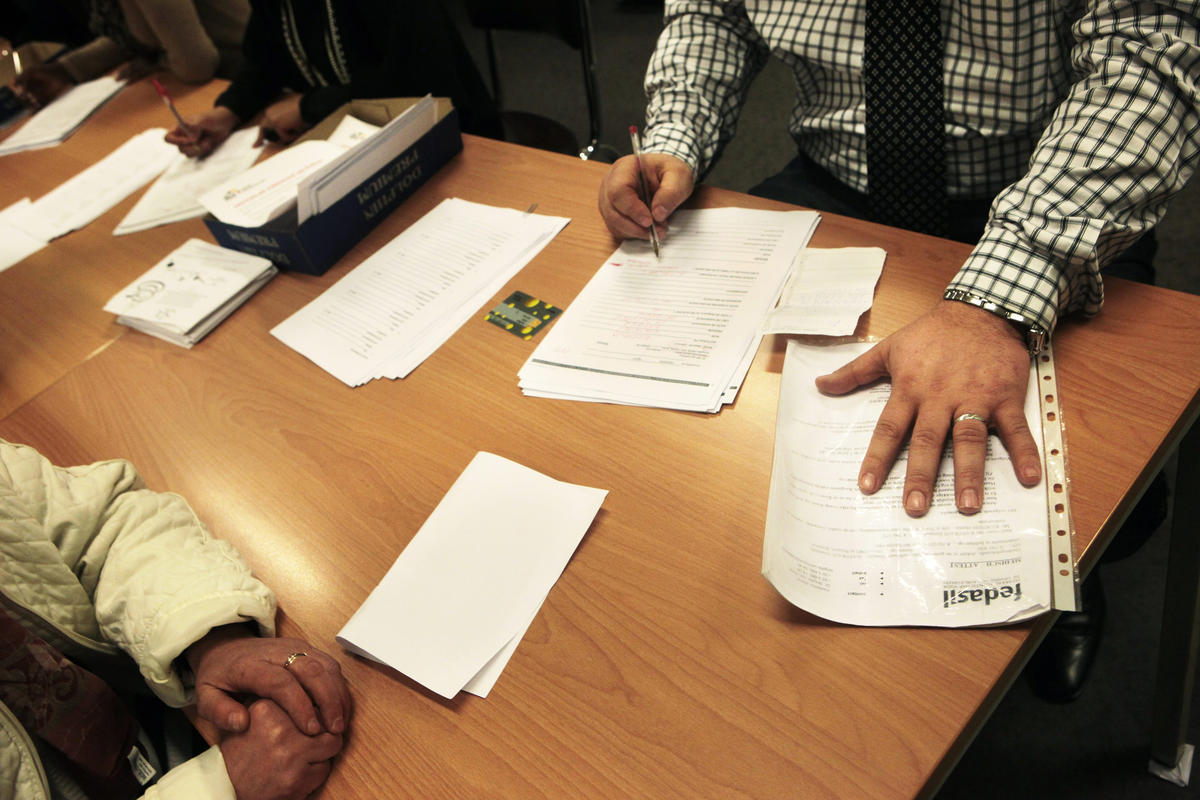Refugee status is governed at the universal level by the 1951 Convention relating to the Status of Refugees and its 1967 Protocol. States parties to the 1951 Convention assume specific obligations towards refugees, including establishing procedures to identify who is a refugee and therefore entitled to rights and protections afforded under the 1951 Convention.
The assessment and determination of whom is a refugee and entitled to international protection is the responsibility of the country to which a refugee arrives and/or submits an application for refugee status.
Under certain circumstances, UNHCR may conduct RSD under its mandate to identify persons of concern. Recognition by UNHCR as a refugee is a vital tool for protecting asylum seekers and connecting them to long-term, durable solutions such as resettlement. UNHCR may conduct refugee status determination when:
- a State is not party to the 1951 Convention or the 1967 Protocol;
- a State is party to the 1951 Convention but has not established asylum procedures;
- a State is party to the 1951 Convention but retains the geographic limitation thereby denying some access to their asylum procedures; and
- UNHCR has assessed serious shortcomings in the State’s asylum procedure that prevent asylum seekers from obtaining refugee status and/or receiving adequate protection.
UNHCR works closely with states to help them assume increased responsibility for RSD and improve their RSD procedures.
In Israel, UNHCR was in charge of RSD beginning in the mid-1970s, at the request of the Government, although Israel is among the original signatories to the 1951 Refugee Convention and its 1967 Protocol.
In 1976, UNHCR established an ‘Honorary Correspondent’ office in Israel, whose task was to promote the implementation of the 1951 Convention regarding asylum seekers arriving in Israel.
For the next twenty-five years, UNHCR managed RSD on behalf of Israel and sent recommendations regarding asylum requests to UNHCR’s Geneva headquarters, where decision-making on refugee status in Israel occurred. If refugee status was determined, Israel’s Ministry of Interior honored the decision and issued the refugee a visa.
In 2008, UNHCR started the process of handing over RSD to the State of Israel and officially transferred the responsibility to Israel in 2009.
Asylum Statistics
Based on statistics shared by PIBA with UNHCR, since the handover of responsibility for RSD from UNHCR to the Ministry of Interior in July 2009, refugee status has been granted in only 72 cases out of a total of 81,799 asylum applications received, meaning the recognition rate of refugees in Israel stands at less than 0.1% (last updated July 2020).
As of mid-2020, there were 36,802 pending asylum applications from asylum seekers from almost 90 countries worldwide, 30% of whom are female applicants. The top five nationalities pending a response on their asylum application from the State of Israel are Eritreans (12,181), Russians (4,970), Sudanese (4,536), Ukrainians (3,678) and Georgians (1,311).
For periodical statistical updates, click here to read PIBA reports on Statistics of Foreigners in Israel.
Click here to learn about the two key issues impacting asylum seekers in Israel:
1) Refugee status for persons who refuse to perform military service
2) Humanitarian visa for Darfuris
Documents and Resources
**Publications by non-UNHCR authors are not necessarily endorsed by or representative of UNHCR
- PIBA Reports on Statistics of Foreigners in Israel**
- PIBA v. Masegna, appeal 12154-04-18 (April 2018) – Hebrew Only
- Masegna v. The Ministry of Interior, appeal 1010-14 (February 2018) – Hebrew Only
- UNHCR intervention before the Supreme Court of Israel in the case HCJ 7146/12 (2 June 2013)




